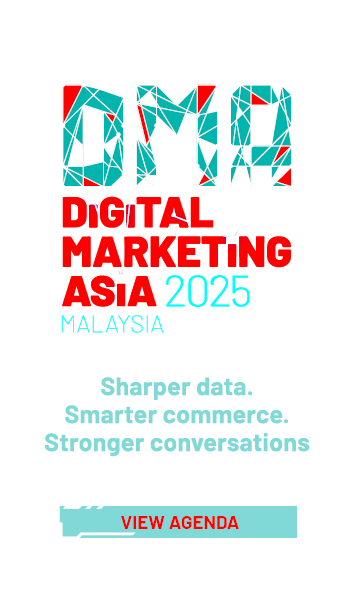



The F1 comes and goes in a flash, but your sponsorship impact shouldn’t
share on
Every year, Formula 1 (F1) captures the attention of millions of fans worldwide, and since 2008, Singapore has hosted one of the sport’s most distinctive and iconic races, the Grand Prix. For locals and international visitors alike, it’s a highlight on the sporting calendar, drawing crowds, media coverage and a unique sense of spectacle.
But for marketers, it presents a dilemma: is it worth the sponsorship dollars to invest in such an infrequent, high-stakes event, no matter how glamorous or popular it may be?
On paper, the Singapore Grand Prix ticks many of the boxes marketers love: global prestige, a passionate fanbase and a platform to drive mass awareness. But unlike season-long tournaments or annual leagues with year-round engagement, a Formula 1 is here for a weekend, and the circus rolls on to another city.
Of course there are global partners present at every race, but there are also opportunities for local sponsorships, which would already be locked in for this year. But with the spotlight on F1, this is a timely opportunity to reflect on how Singapore-based brands can make the most of rare, global sporting moments, and what it really takes to turn that exposure into long-term impact.
Niche audiences can be a pro, not a con
There’s no denying that F1 has historically been seen as more of a niche sport compared to football, rugby or cricket in many markets. But in the last few years, that has completely changed.
F1 fans have always been famously passionate and loyal, but now they are increasingly diverse, thanks to the ongoing success of Netflix documentary Drive to Survive and the sport’s growing digital footprint and proactive fan engagement initiatives. It even recently received the Hollywood treatment in a dedicated feature film for Apple Plus starring Brad Pitt.
According to the latest "Global F1 fan survey", Drive to Survive hasn’t just lifted global awareness, it’s drawn in younger fans under 35 and significantly more female audiences. In Southeast Asia in particular, F1 is now attracting a new wave of fans, far beyond the traditional upper-class “motorhead” stereotype.
That means the Singapore Grand Prix is more than just a race. It’s a cultural spectacle that extends well beyond the track, from music performances to celebrity appearances - making it one of the most high-profile and socially amplified sporting events in the region.
The survey also found that social media is central to how fans interact with the sport, whether it’s amplifying “home race” sentiment (which is strongest in Asia-Pacific, with 80% to 87% of fans emphasising its importance) or creating content that allows them to be “seen” as part of the event itself.
For brands, this creates two key imperatives. First, align closely with F1’s identity and fan sentiment, sponsorships work best when there’s a clear fit.
Second, ensure the impact doesn’t stop at the chequered flag. Analytic Partners’ "Lots of littles" research shows that paid social can deliver up to 2.1x the ROI of the event activation itself. For a fanbase that thrives on sharing and social visibility, social is a critical lever in turning fleeting sponsorships into long-term brand value.
And yet, despite this opportunity, too many brands still treat events such as the F1 as one-off moments. The sponsorship runs for a weekend, the campaign runs for a few weeks and then it’s back to business as usual.
Which brings us to the bigger challenge: why sponsorships often miss the mark.
Don’t just show up. Build a campaign around your investment
Sponsorships rarely deliver strong ROI when they stand alone. In fact, we consistently see lower effectiveness for sponsorships that aren’t part of a broader campaign. That’s not because sponsorships don’t work, it’s because they’re often under-leveraged.
To unlock value, marketers need to look beyond the signage and build a multi-channel campaign around the moment. That means amplifying your presence across owned, earned and paid channels, integrating with content where possible and finding ways to extend the message before and after the event.
Analytic Partners’ data shows that brands who do this well can see two to six times the ROI over the long term compared to those who don’t. When broadcast integrations are part of the mix, we’ve seen an additional 30% uplift in effectiveness.
That’s the difference between a flash of exposure and a campaign that builds memory, mental availability and commercial impact.
If you’re going to invest, you need to measure it
It’s one thing to plan a great activation, but if you can’t prove the value back to the business, that spend becomes harder to defend.
Recent research we’ve conducted revealed 90% of sponsorship investment goes unmeasured. In today’s budget-conscious environment, that lack of accountability can quickly become a blocker to long-term sponsorship success. Too often it seems that the CEO being passionate about a sport and the chance for some flashy corporate hospitality is the best reason businesses have for making these investments.
The issue isn’t that sponsorships can’t be measured. It’s that marketers often focus only on surface-level exposure metrics, such as impressions or logo views, without understanding the total commercial impact across channels.
What’s needed is a more holistic approach. Measurement should capture not just the sponsorship itself, but the entire activation ecosystem around it, from media and creative to promotions, integrations and social extensions.
We’ve seen brands unlock US$5-10 million in additional revenue for every US$10 million spent when they accurately measure and optimise their sponsorship programs.
That means measurement isn’t just a nice-to-have - it’s what separates campaigns that may just break even from those that generate real growth.
So if you’re planning to invest in Formula 1, or any major event, make sure your measurement strategy is part of the plan from day one.
Start early – it matters whether you’re already in the race
Global events such as Formula 1 or the FIFA World Cup don’t come around often, and when they do, brands need to start early, not just in planning activations but in thinking about how the event can drive long-term value.
If we look at Singapore specifically, this presents a different opportunity depending on where your brand is starting from.
If you’re already involved in the F1 space, the Grand Prix is your moment to double down as the eyes of even casual fans turn to the Marina Bay circuit. The race can act as an amplification tool for your brand sponsorship, reinforcing long-term association and making your presence feel natural and expected.
But if you’re new to the sport, the question becomes: how will you continue the story afterwards? Audiences can spot a superficial investment with no real brand alignment. If there’s no ongoing narrative or follow-up, the impact will be short-lived.
That’s why planning matters, not just for the event itself, but for how it fits into your year-long marketing calendar.
We all understand the appeal of tying in with a rare, high-profile event like the Singapore Grand Prix, and there’s no doubt they offer a unique opportunity for brands. But it’s only effective and worth it if it’s activated properly.
It’s not enough to buy the sponsorship. You need to build a campaign around it, plan how you’ll extend it and measure the full impact. For those who get it right, the returns can far exceed a logo on a car – and can drive both brand value and bottom-line results.
Because in the end, the best sponsorships shouldn’t just create noise, they should create lasting momentum.
This article was written by Jo-Ann Foo, senior director at Analytic Partners.
share on
Free newsletter
Get the daily lowdown on Asia's top marketing stories.
We break down the big and messy topics of the day so you're updated on the most important developments in Asia's marketing development – for free.
subscribe now open in new window